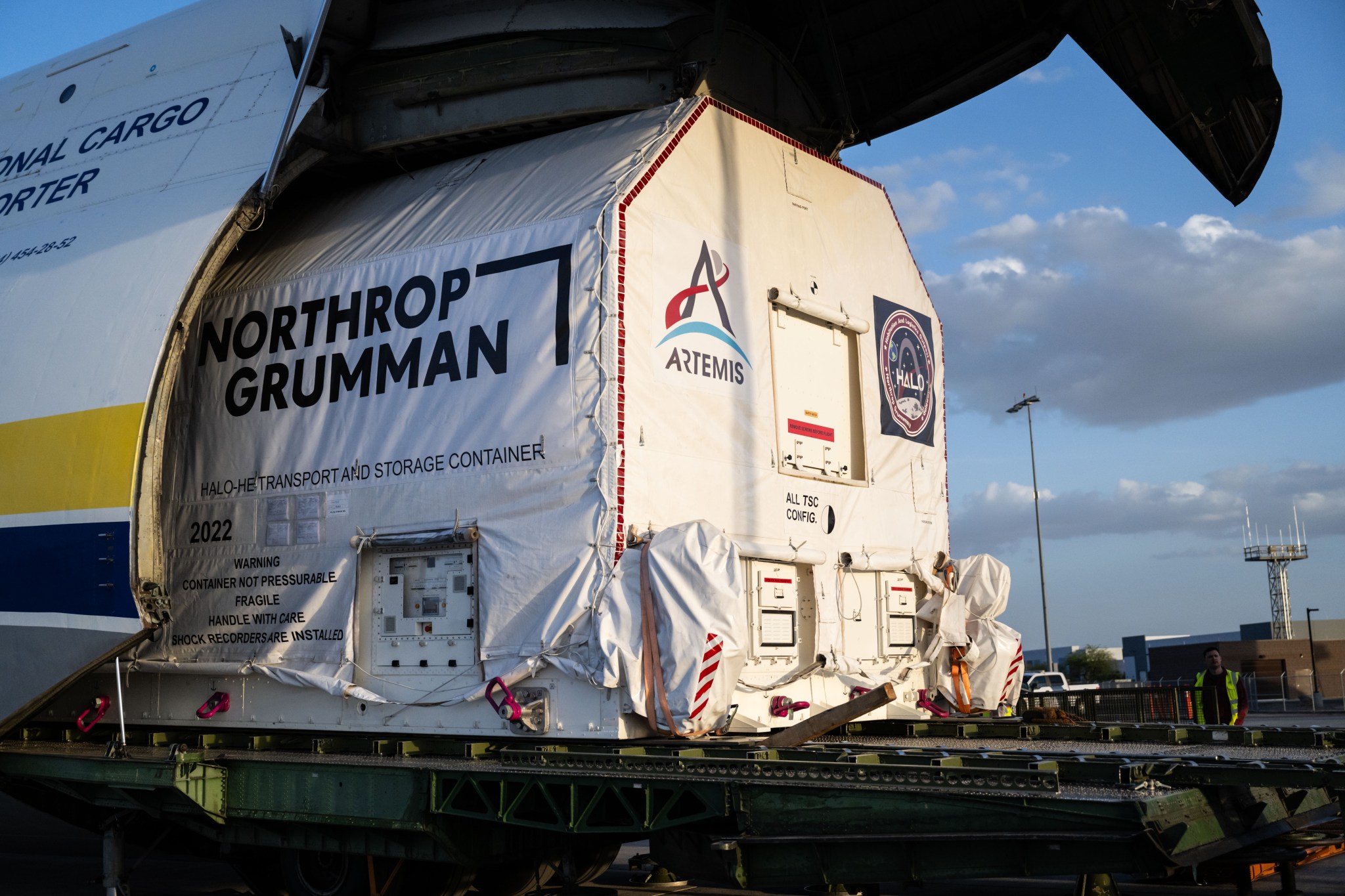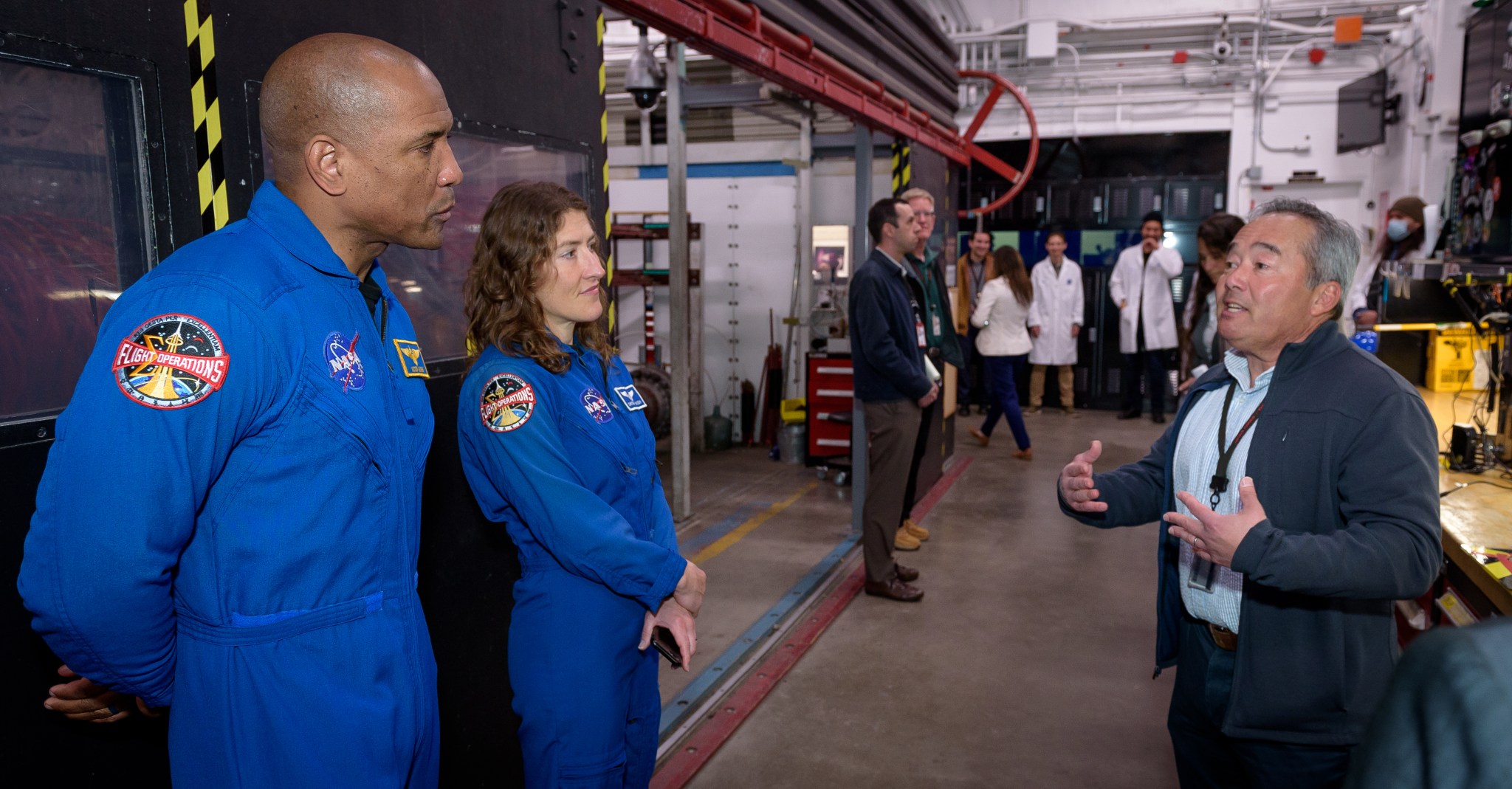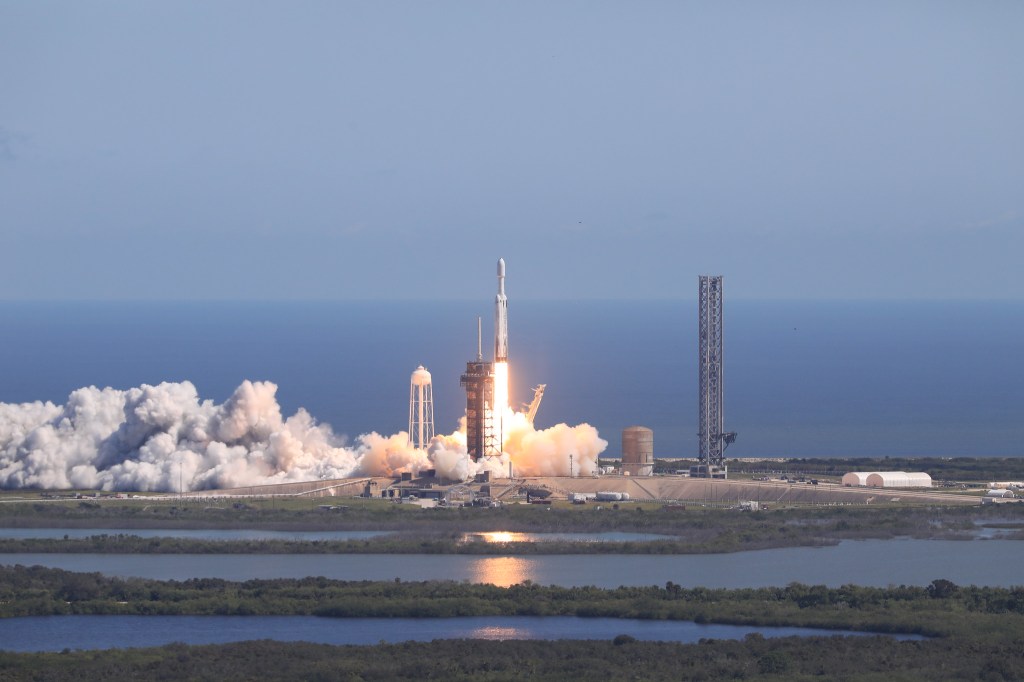3 min read Preparations for Next Moonwalk Simulations Underway (and Underwater) Gateway’s HALO module at Northrop Grumman’s facility in Gilbert, Arizona, on April 4, 2025, shortly after its arrival from Thales Alenia Space in Turin, Italy. NASA/Josh Valcarcel NASA continues to mark progress on plans to work with commercial and international partners as part of the Gateway program. The primary structure of HALO (Habitation and Logistics Outpost) arrived at Northrop Grumman’s facility in Gilbert, Arizona, where it will undergo final outfitting and verification testing. HALO will provide Artemis astronauts with…
Read MoreTag: Exploration Systems Development Mission Directorate
NASA Tests Key Spacesuit Parts Inside This Icy Chamber
6 min read Preparations for Next Moonwalk Simulations Underway (and Underwater) An astronaut glove designed for International Space Station spacewalks is prepped for testing in a chamber called CITADEL at NASA JPL. Conducted at temperatures as frigid as those Artemis III astronauts will see on the lunar South Pole, the testing supports next-generation spacesuit development. NASA/JPL-Caltech Engineers with NASA Johnson and the NASA Engineering and Safety Center ready an astronaut glove for insertion into the main CITADEL chamber at JPL. The team tested the glove in vacuum at minus 352…
Read MoreNASA Leaders to Participate in 2025 Space Symposium in Colorado
Credit: NASA NASA acting Administrator Janet Petro and acting Associate Administrator Vanessa Wyche will lead the agency’s delegation at the 40th Space Symposium, Monday, April 7 through Thursday, April 10, in Colorado Springs, Colorado. Petro will join Space Foundation Chief Executive Officer Heather Pringle for a fireside chat to discuss NASA’s current priorities and partnerships at 12:15 p.m. EDT on Tuesday, April 8. Additional NASA participation in the conference includes a one-on-one discussion with Nicola Fox, associate administrator, Science Mission Directorate, and a lunar science and exploration panel featuring Lori…
Read MoreNASA Welcomes Gateway Lunar Space Station’s HALO Module to US
2 min read Preparations for Next Moonwalk Simulations Underway (and Underwater) Gateway’s HALO (Habitation and Logistics Outpost) arrives in Mesa, Arizona, after traveling from Italy, where Thales Alenia Space fabricated its primary structure. Delivered by cargo aircraft to Phoenix-Mesa Gateway Airport, HALO will be transported to Northrop Grumman’s facility in Gilbert for final outfitting. NASA/Josh Valcarcel A core component of Gateway, humanity’s first space station around the Moon, is now on American soil and one step closer to launch. In lunar orbit, Gateway will support NASA’s Artemis campaign to return…
Read MoreArtemis Astronauts & Orion Leadership Visit NASA Ames
2 min read Preparations for Next Moonwalk Simulations Underway (and Underwater) Astronauts Victor Glover and Christina Koch tour the Arc Jet Facility at NASA’s Ames Research Center, learning more about the testing equipment’s capabilities to analyze thermal protection systems from George Raiche, thermophysics facilities branch chief at Ames. NASA/Donald Richey As NASA prepares to send astronauts to the Moon aboard the Orion spacecraft, research, testing, and development at NASA’s Ames Research Center in California’s Silicon Valley has played a critical role. Recently, Ames welcomed Artemis II astronauts Christina Koch and…
Read MoreNASA Trains for Orion Water Recovery Ahead of Artemis II Launch
4 min read Preparations for Next Moonwalk Simulations Underway (and Underwater) The Crew Module Test Article (CMTA), a full scale mockup of the Orion spacecraft, is seen in the Pacific Ocean as teams practice Artemis recovery operations during Underway Recovery Test-12 onboard USS Somerset off the coast of California, Saturday, March 29, 2025. NASA/Bill Ingalls Preparations for NASA’s next Artemis flight recently took to the seas as a joint NASA and Department of Defense team, led by NASA’s Exploration Ground Systems Program, spent a week aboard the USS Somerset off the…
Read MoreNASA Marks Artemis Progress With Gateway Lunar Space Station
Gateway’s HALO (Habitation and Logistics Outpost) in a cleanroom at Thales Alenia Space in Turin, Italy. After final installations are complete, it will be packaged and transported to the United States for final outfitting before being integrated with Gateway’s Power and Propulsion Element and launched to lunar orbit. Thales Alenia Space Through the Artemis campaign, NASA will send astronauts on missions to and around the Moon. The agency and its international partners report progress continues on Gateway, the first space station that will permanently orbit the Moon, after visiting the…
Read MoreNASA Invites Media to Artemis II Moon Mission Activities at Kennedy
A massive crane lifts NASA’s Orion spacecraft out of the Final Assembly and System Testing cell and moves it to the altitude chamber to complete further testing on Thursday, Nov. 7, 2024, inside the Neil A. Armstrong Operations and Checkout building at NASA’s Kennedy Space Center in Florida. The altitude chamber simulates deep space vacuum conditions, and the testing will provide additional data to augment data gained during testing earlier this summer. Credit: NASA/Kim Shiflett Media are invited to visit NASA’s Kennedy Space Center in Florida, to capture imagery of…
Read MoreNASA Outlines Latest Moon to Mars Plans in 2024 Architecture Update
An artist’s concept of the Earth, Moon, and Mars. Credit: NASA As NASA develops a blueprint for space exploration throughout the solar system for the benefit of humanity, the agency released several new documents Friday updating its Moon to Mars architecture. The roadmap sets NASA on course for long-term lunar exploration under the Artemis campaign in preparation for future crewed missions to Mars. Following an Architecture Concept Review, the 2024 updates include a revision of NASA’s Architecture Definition Document which details technical approaches and processes of the agency’s exploration…
Read MoreNASA Accelerates Space Exploration, Earth Science for All in 2024
With a look back at 2024, NASA is celebrating its many innovative and inspiring accomplishments this year including for the first time, landing new science and technology on the Moon with an American company, pushing the boundaries of exploration by launching a new mission to study Jupiter’s icy moon Europa; maintaining 24 years of continuous human exploration off the Earth aboard the International Space Station, and unveiling the first look at its supersonic quiet aircraft for the benefit of humanity. The agency also shared the wonder of a total eclipse…
Read More








